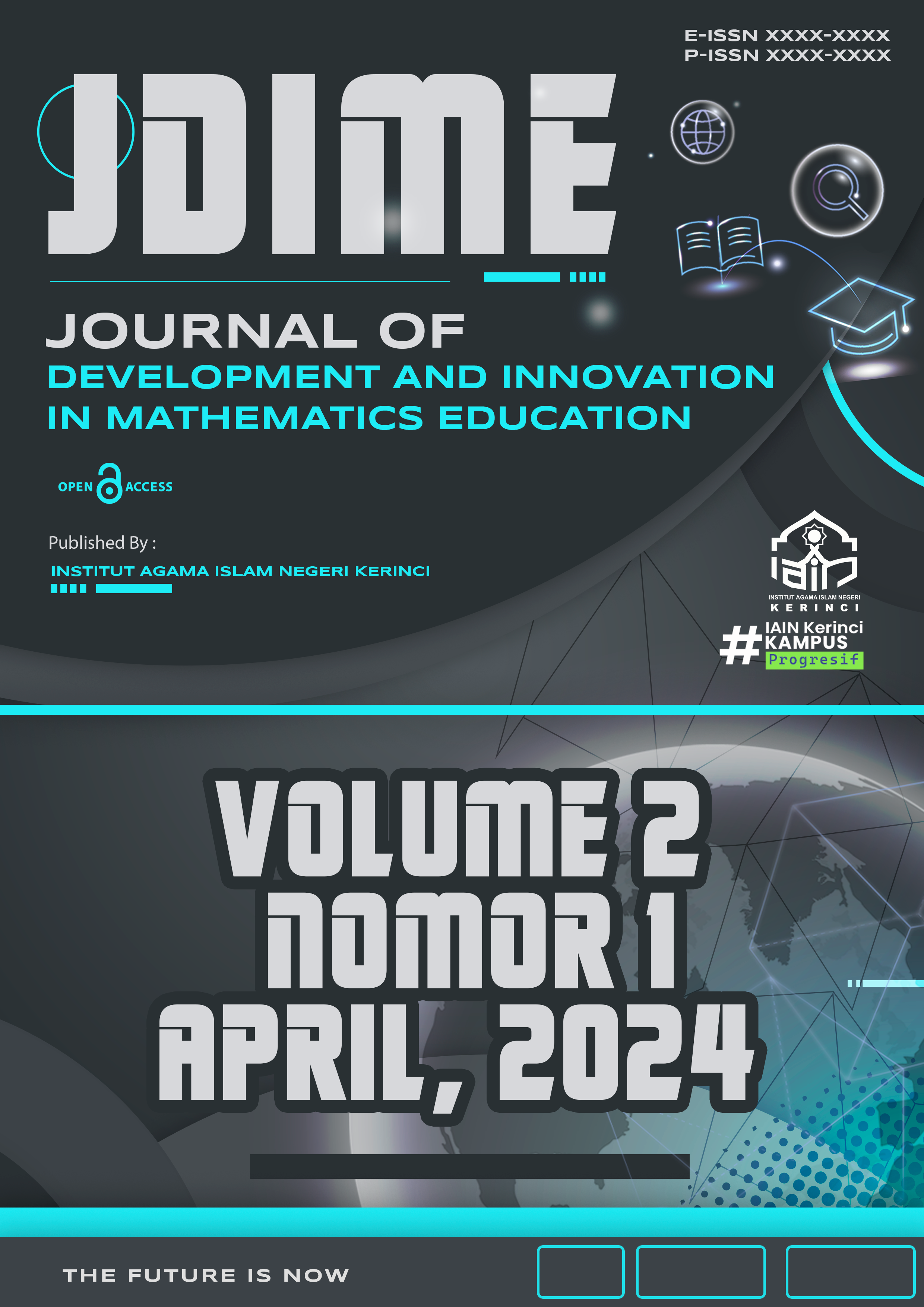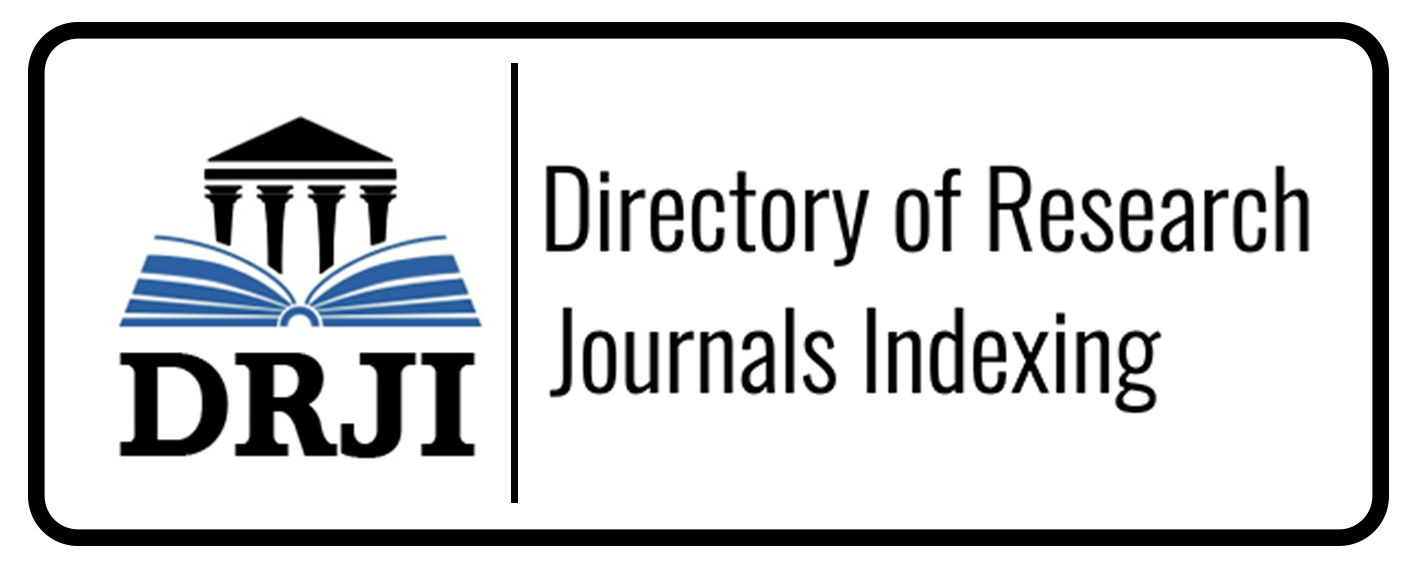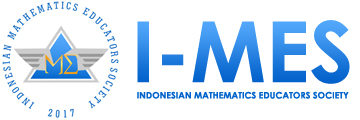Development of the Android-Based Edutainment Game 'Tekamatika' to Enhance Students' Creative Thinking Skills
Abstract
This study aims to develop and test the effectiveness of the Android-based edutainment game "Tekamatika" in enhancing students' creative thinking skills, recognizing the importance of these skills in addressing 21st-century challenges. The method employed is Research and Development (R&D) using the ADDIE model, which includes five stages: Analysis, Design, Development, Implementation, and Evaluation, as well as systematic evaluation using the CIPP model (Context, Input, Process, Product). The instruments used include material expert validation questionnaires, teacher and student assessment questionnaires, creative thinking tests, and student perception questionnaires. Data are analyzed to measure the validity, practicality, and effectiveness of the product. The research results indicate that the "Tekamatika" game is valid with an average score of 4.1 from material experts, highly practical with an average score of 4.293 from teachers, and very practical with an average score of 4.7 from students. The improvement in students' creative thinking abilities was confirmed through a gain test of 0.65 and a paired sample t-test with a significance level of 0.0231<0.05. In conclusion, the "Tekamatika" game is proven to be valid, practical, and effective in enhancing students' creative thinking skills. The implications of this research suggest that edutainment games can be an effective teaching method, capable of increasing motivation, student engagement, and facilitating interactive understanding of mathematical concepts.
Downloads
References
An, Y. J., & Cao, L. (2017). Game-based learning in education: A systematic review of the literature. Educational Technology Research and Development, 65(1), 23-50. https://doi.org/10.1007/s11423-016-9448-3
An, Y., Cao, L., & Wang, Y. (2017). The effects of game-based learning on the academic performance of students with different cognitive styles. Journal of Educational Technology Development and Exchange, 10(1), 45-58.
Branch, R. M. (2009). Instructional design: The ADDIE approach. Springer Science & Business Media.
Chee, Y. S., Hong, H. Y., & Tan, C. C. (2016). Integrating game-based learning and collaborative learning: A systematic review. Journal of Educational Technology & Society, 19(2), 1-12.
Cheng, S. C., Hwang, G. J., & Wang, H. Y. (2015). Investigating the impacts of using interactive e-books on learning motivation and learning outcomes. Interactive Learning Environments, 23(3), 329-341.
Chin, J. P., Diehl, V. A., & Norman, K. L. (1988). Development of an instrument measuring user satisfaction of the human-computer interface. In Proceedings of the SIGCHI conference on Human factors in computing systems (pp. 213-218).
Cohen, L., Manion, L., & Morrison, K. (2018). Research methods in education (8th ed.). Routledge.
Creswell, J. W. (2014). Research design: Qualitative, quantitative, and mixed methods approaches. SAGE Publications.
Davis, F. D. (1989). Perceived usefulness, perceived ease of use, and user acceptance of information technology. MIS Quarterly, 13(3), 319-340.
de Jong, T., & van Joolingen, W. R. (2019). Educational technology: The role of learning technologies in educational research. Educational Psychologist, 54(2), 75-85. https://doi.org/10.1080/00461520.2019.1563874
Fletcher, J. D., & Tobias, S. (2019). The multimedia principle in educational technology. In R. Mayer (Ed.), The Cambridge Handbook of Multimedia Learning (pp. 57-82). Cambridge University Press. https://doi.org/10.1017/9781316674197.005
Fraenkel, J. R., Wallen, N. E., & Hyun, H. H. (2015). How to design and evaluate research in education (9th ed.). McGraw-Hill Education.
Fredricks, J. A., Blumenfeld, P. C., & Paris, A. H. (2004). School engagement: Potential of the concept, state of the evidence. Review of Educational Research, 74(1), 59-109.
Gee, J. P. (2003). What video games have to teach us about learning and literacy. Computers in Entertainment (CIE), 1(1), 20-20.
Gee, J. P. (2017). Games, Learning, and Society: Learning and Literacy in the Digital Age. Routledge.
Guilford, J. P. (1967). The nature of human intelligence. McGraw-Hill.
Hamari, J., Shernoff, D. J., Rowe, E., Coller, B., Asbell-Clarke, J., & Edwards, T. (2016). Challenging games help students learn: An empirical study on engagement, flow and immersion in game-based learning. Computers in Human Behavior, 54, 170-179.
Hirumi, A. (2016). Mobile game-based learning: Conceptual frameworks and practical guidelines. Journal of Educational Technology Development and Exchange, 9(1), 1-16. https://doi.org/10.18785/jetde.0901.01
Huang, R. H., & Lin, M. (2017). Mobile learning: The impact of technology and pedagogy on students’ motivation and learning outcomes. Educational Technology Research and Development, 65(5), 1191-1210.
Hwang, G. J., & Wu, P. H. (2012). Advancements and trends in digital game-based learning research: A review of publications in selected journals from 2001 to 2010. British Journal of Educational Technology, 43(1), E6-E10.
Hwang, G. J., Chen, C. H., & Weng, S. C. (2015). Enhancing students' creative thinking skills through mobile-based learning: A study of mobile game-based learning. Journal of Educational Technology & Society, 18(2), 147-157.
Kafai, Y. B., & Burke, Q. (2015). Connected Gaming: What Making Video Games Can Teach Us About Learning and Literacy. MIT Press.
Ke, F. (2008). Computer-based game playing: Implications for educational technology. Educational Technology & Society, 11(3), 294-307.
Khoiriyah, A., & Husamah. (2018). Problem-based learning: Creative thinking skills, problem-solving skills, and learning outcomes of seventh grade students. Journal of Turkish Science Education, 15(1), 51-62.
Kuo, Y. C., Walker, A. E., Schroder, K. E., & Belland, B. R. (2014). Interaction, internet self-efficacy, and self-regulated learning as predictors of student satisfaction in online education courses. The Internet and Higher Education, 20, 35-50.
Likert, R. (1932). A technique for the measurement of attitudes. Archives of Psychology, 22(140), 1-55.
Martin, F., Ertzberger, J., & Smith, P. (2020). The impact of animation on learning outcomes: A meta-analysis. Journal of Educational Psychology, 112(3), 453-468. https://doi.org/10.1037/edu0000397
Mayer, R. E. (2009). Multimedia learning (2nd ed.). Cambridge University Press.
McFarlane, A., Sakellariou, S., & Bell, T. (2017). Games in education: A review of the state-of-the-art. Journal of Computer Assisted Learning, 33(2), 1-18.
Piaget, J. (1954). The construction of reality in the child. Routledge.
Plomp, T., & Nieveen, N. (Eds.). (2013). Educational design research: Part A: An introduction. Enschede: SLO.
Plucker, J. A., Beghetto, R. A., & Dow, G. T. (2004). Why isn't creativity more important to educational psychologists? Potentials, pitfalls, and future directions in creativity research. Educational Psychologist, 39(2), 83-96.
Prensky, M. (2001). Digital natives, digital immigrants part 1. On the Horizon, 9(5), 1-6.
Reeves, T. C., & Nass, C. (2019). The impact of technology on learning and instruction. In R. Mayer (Ed.), The Cambridge Handbook of Multimedia Learning (pp. 257-273). Cambridge University Press. https://doi.org/10.1017/9781316674197.014
Robinson, K. (2011). Out of our minds: Learning to be creative. John Wiley & Sons.
Runco, M. A., & Jaeger, G. J. (2012). The standard definition of creativity. Creativity Research Journal, 24(1), 92-96.
Sawyer, R. K. (2011). Explaining creativity: The science of human innovation. Oxford University Press.
Squire, K. (2016). Video Games and Learning: Teaching and Participatory Culture in the Digital Age. Columbia University Press.
Squire, K., & Jenkins, H. (2017). Harnessing the power of games for learning. Journal of Educational Technology Research and Development, 65(3), 531-546.
Sternberg, R. J. (2006). The nature of creativity. Creativity Research Journal, 18(1), 87-98.
Stufflebeam, D. L. (2003). The CIPP model for evaluation. In D. L. Stufflebeam & T. Kellaghan (Eds.), The international handbook of educational evaluation (pp. 31-62). Springer.
Torrance, E. P. (2006). The Torrance tests of creative thinking: Norms-technical manual figural (streamlined) forms A & B. Scholastic Testing Service.
Vrasetya, A., Nasution, E. Y. P., & Handican, R. (2024). Response of Prospective Mathematics Teacher Students To Learning Difficulties In Calculus Course. Mathline: Jurnal Matematika dan Pendidikan Matematika, 9(3), 645-660.
West, D. M. (2012). Digital schools: How technology can transform education. Brookings Institution Press.
Zhang, D., & Adipat, B. (2005). Challenges, methodologies, and issues in the usability testing of mobile applications. International Journal of Human-Computer Interaction, 18(3), 293-308.
Copyright (c) 2024 Hanifatul Rahmi

This work is licensed under a Creative Commons Attribution 4.0 International License.



























 JDIME: Journal of Development and Innovation in Mathematics Education (e-ISSN
JDIME: Journal of Development and Innovation in Mathematics Education (e-ISSN 
